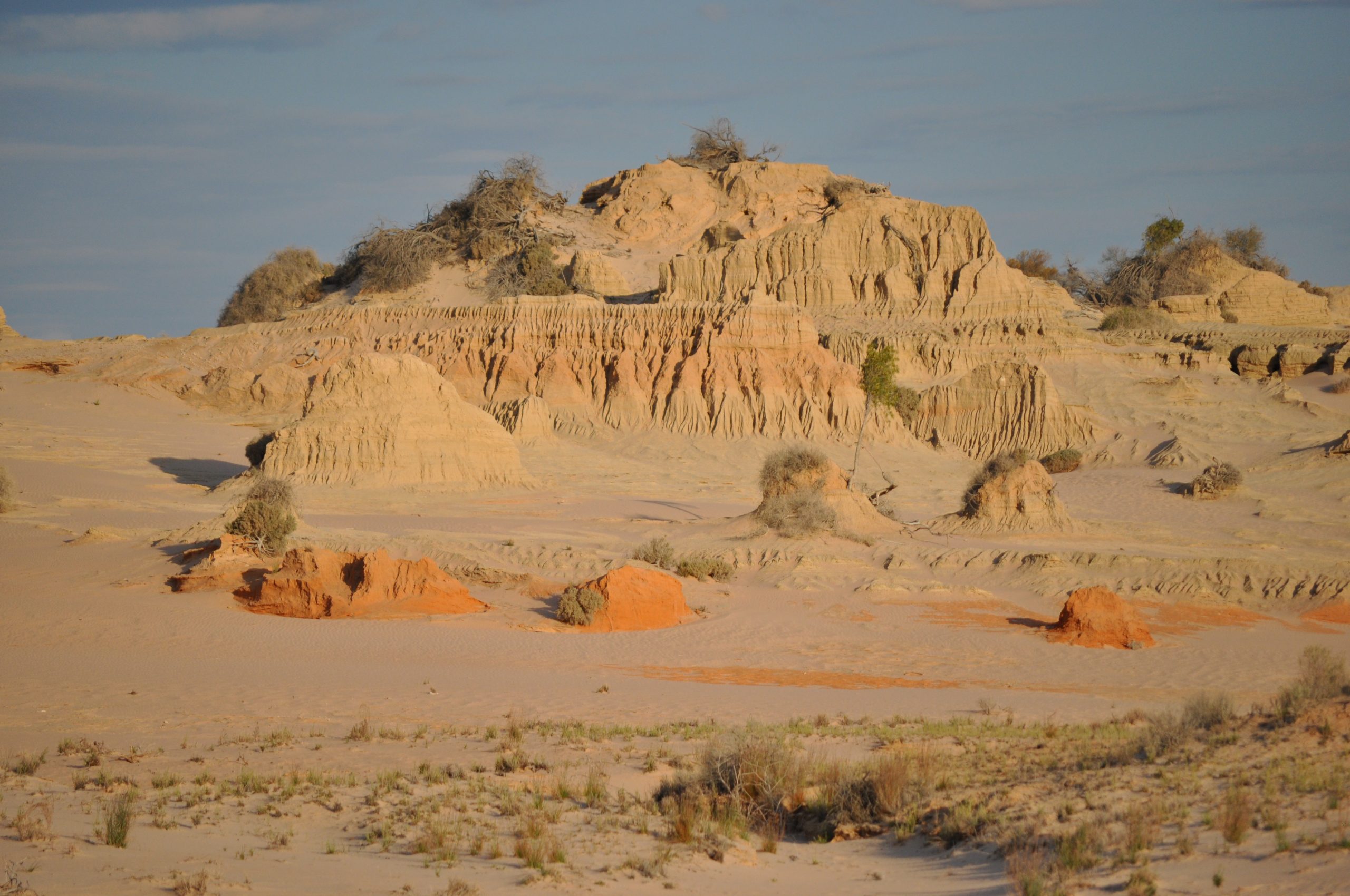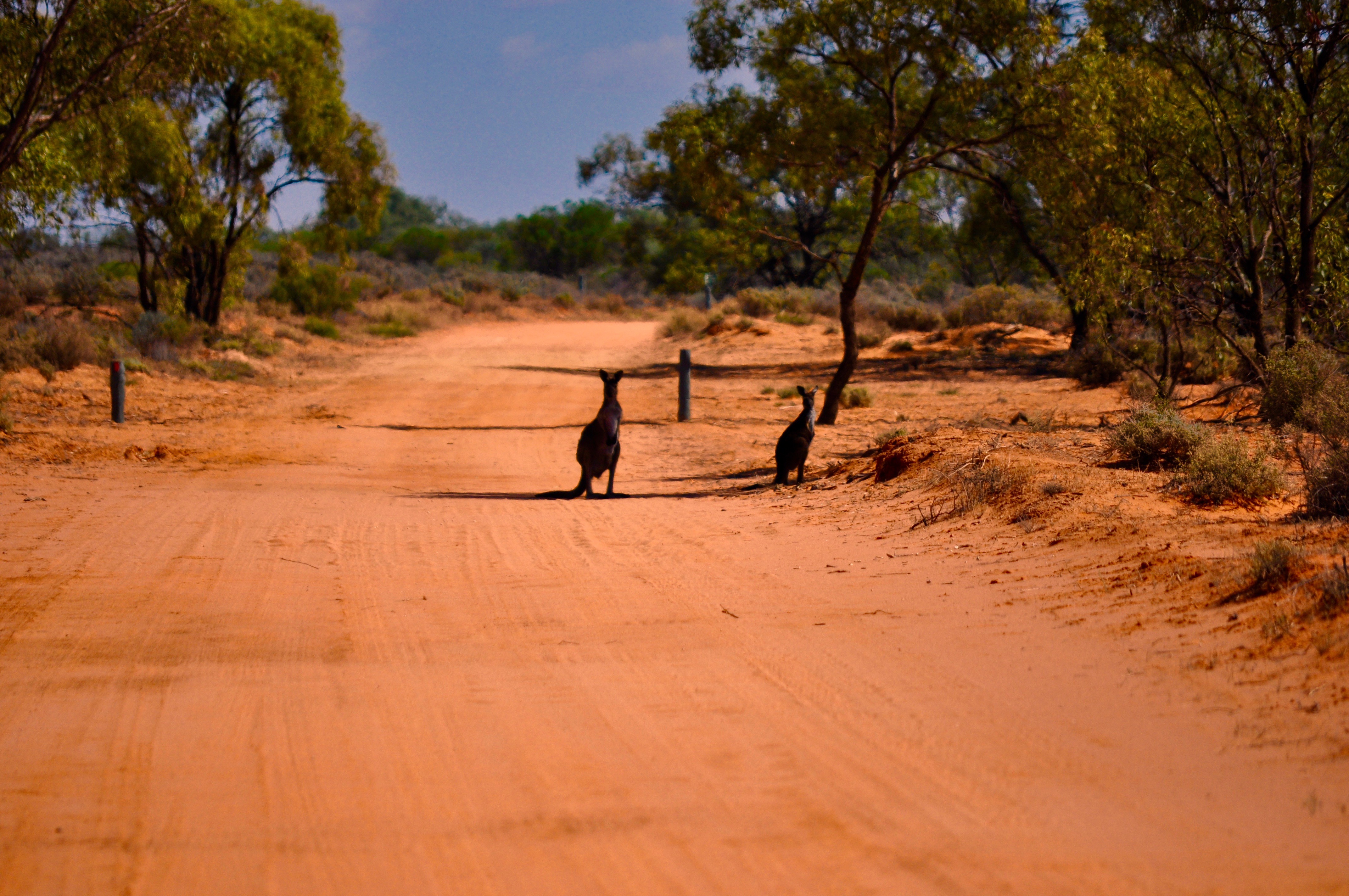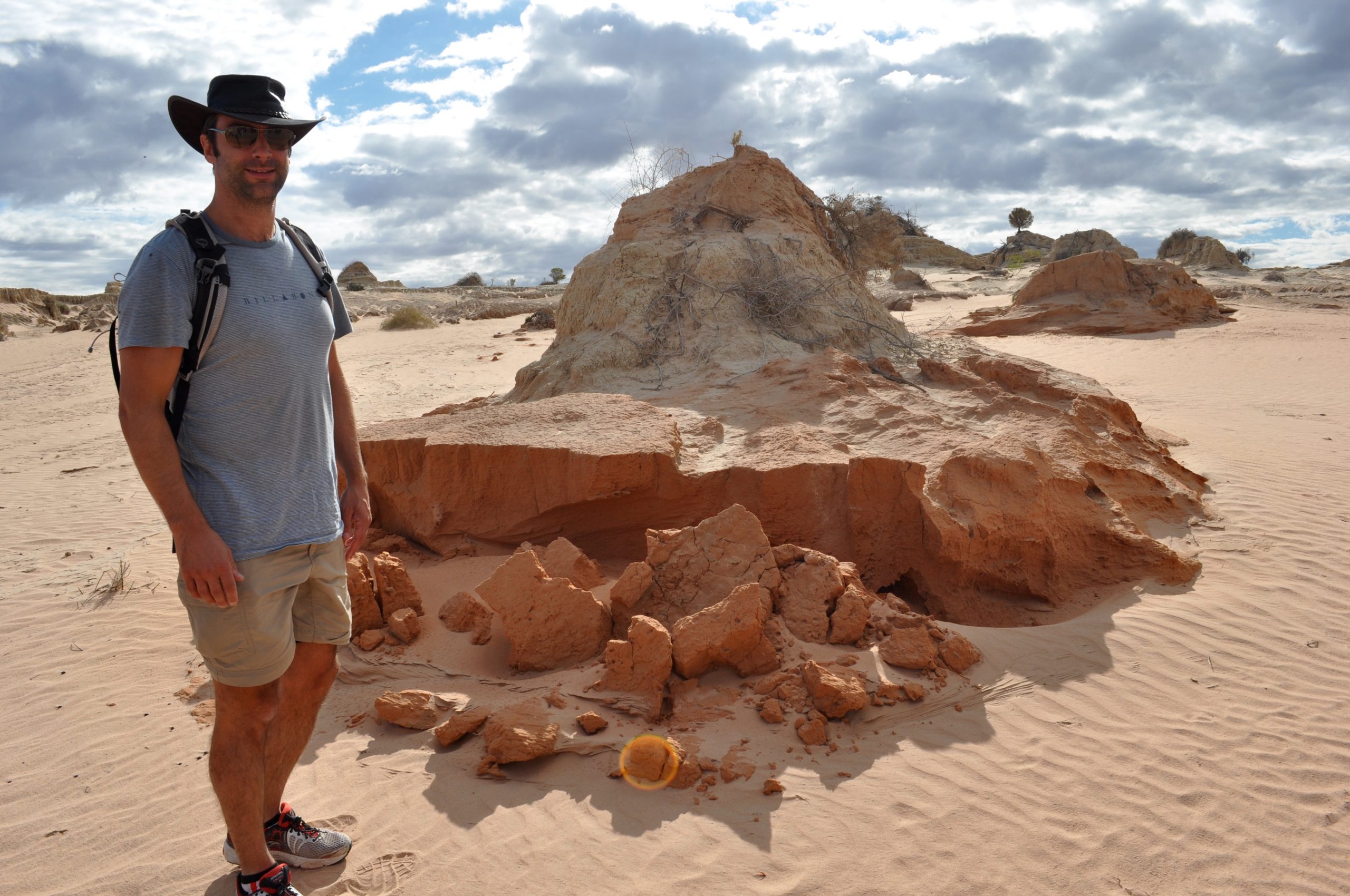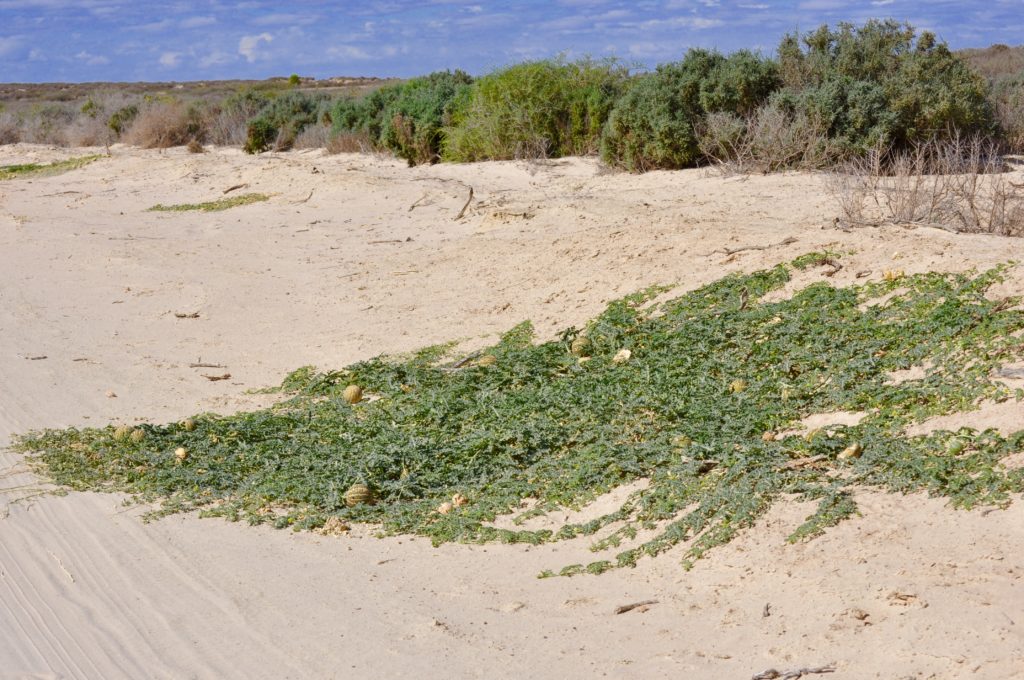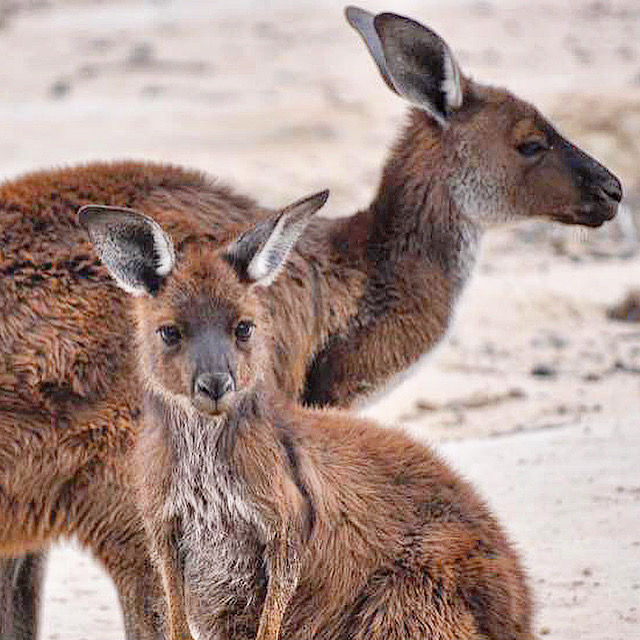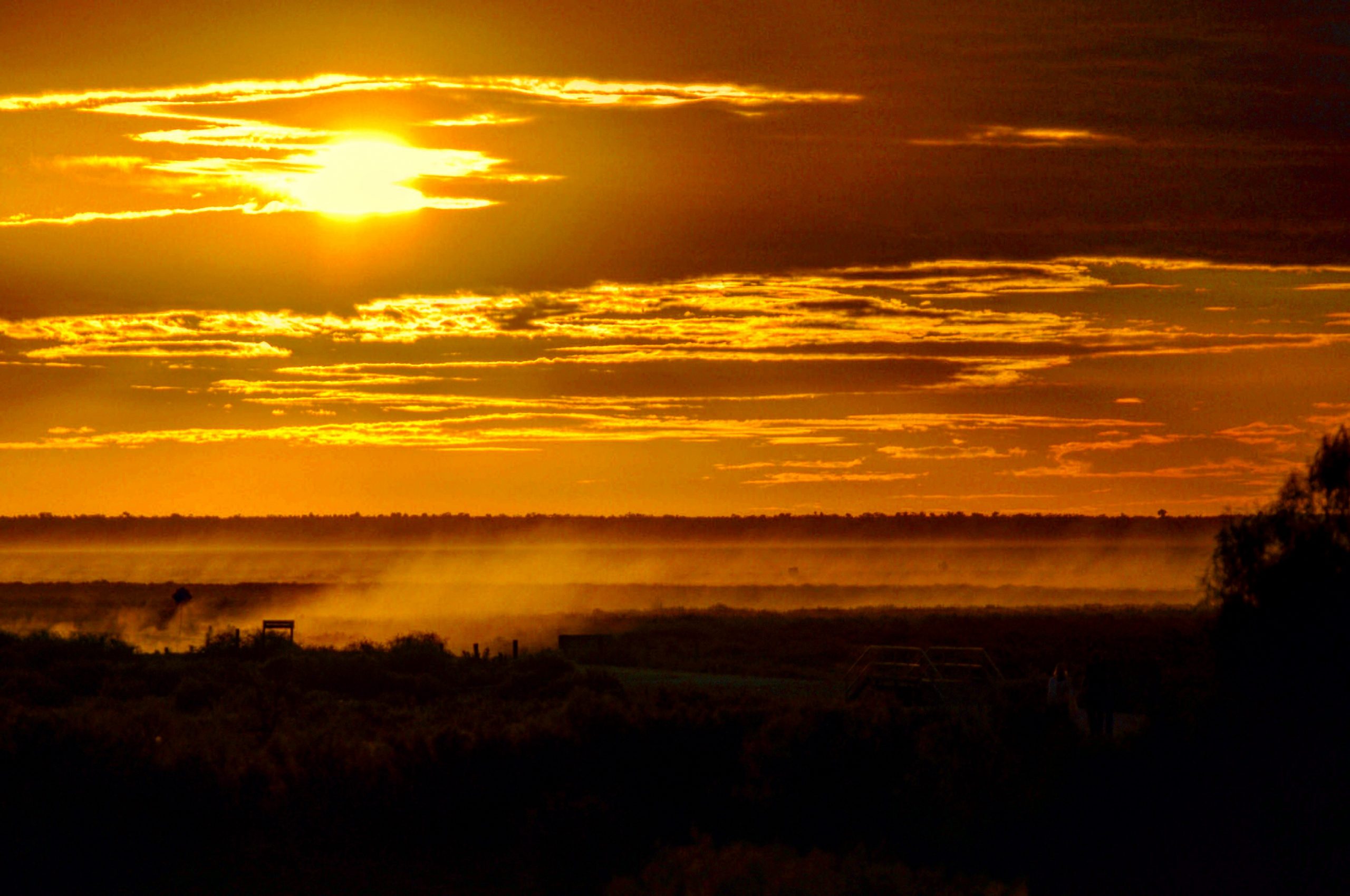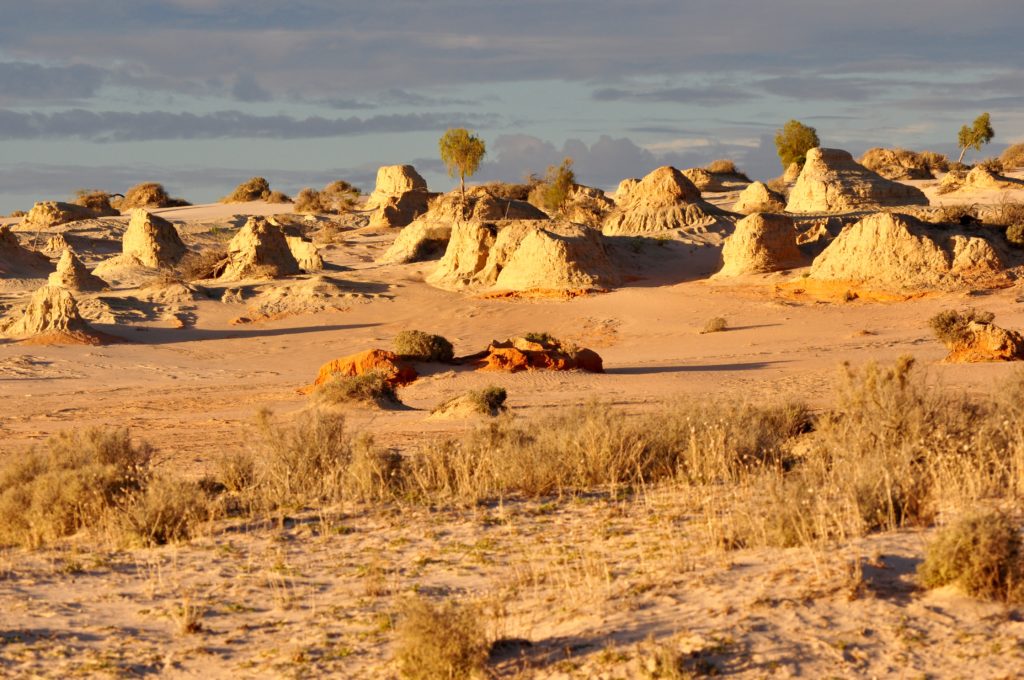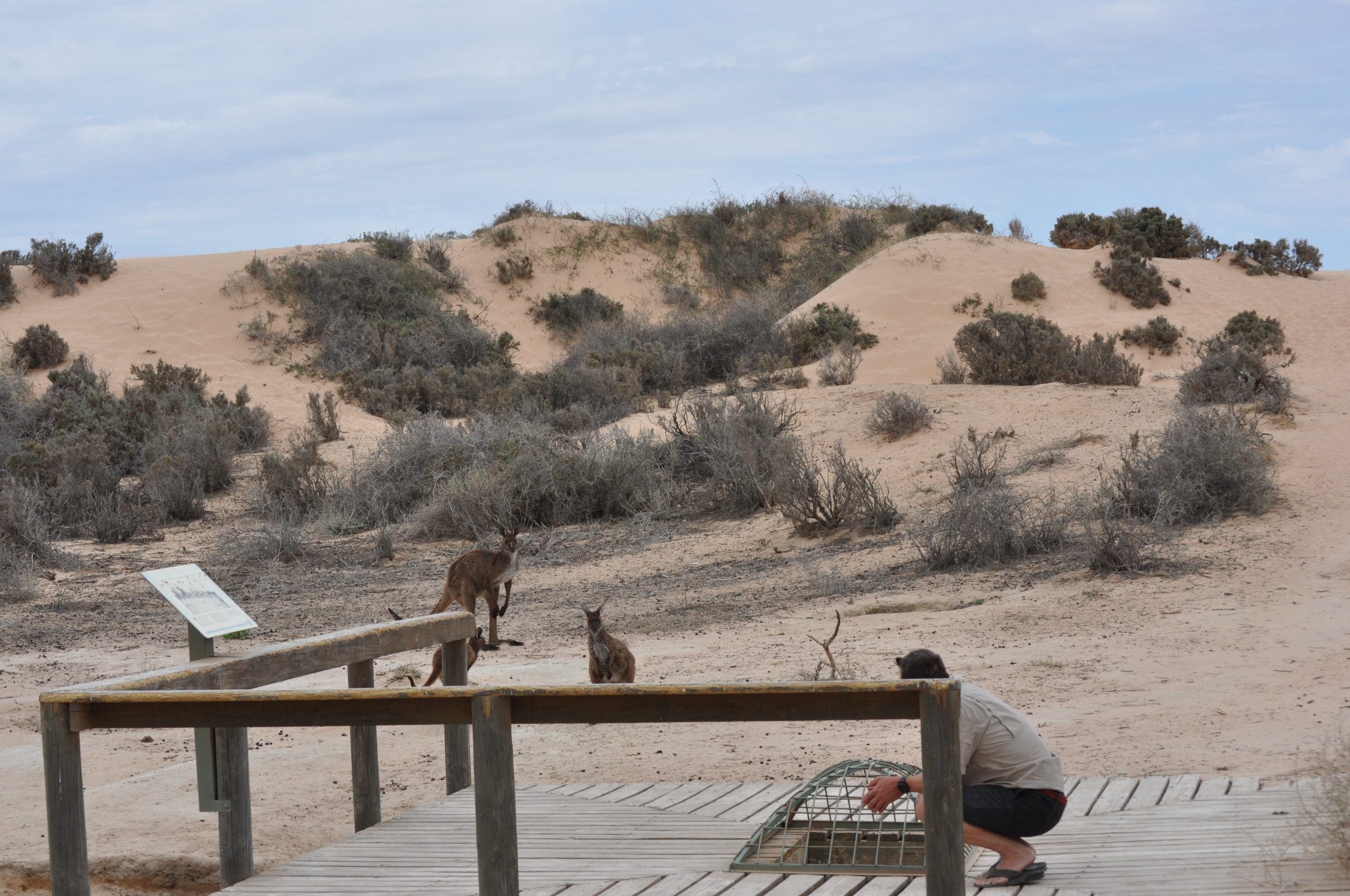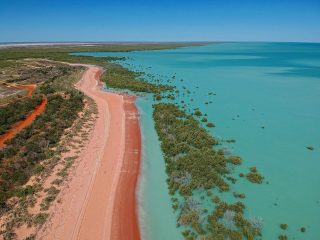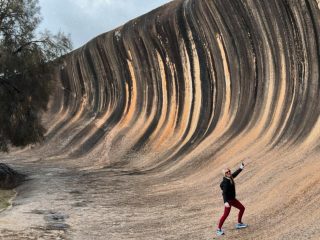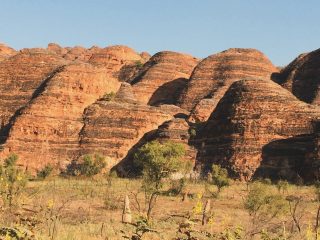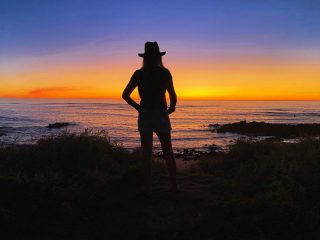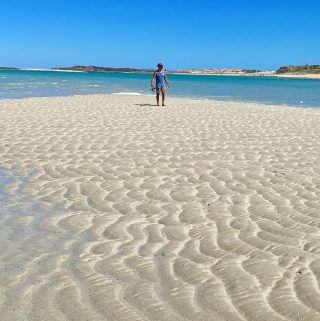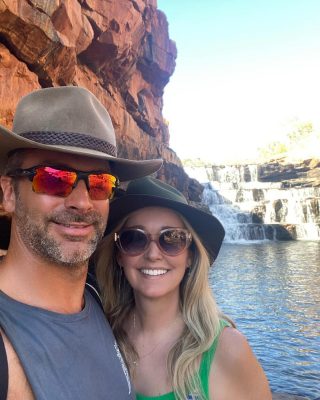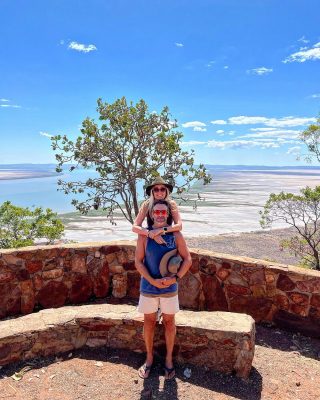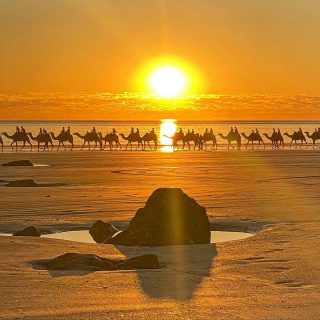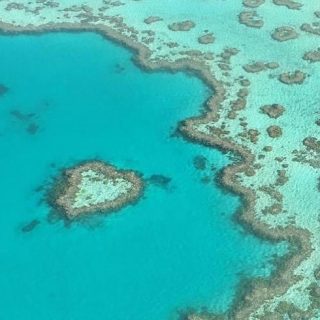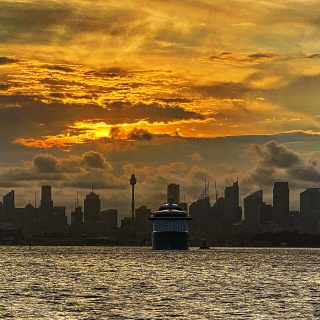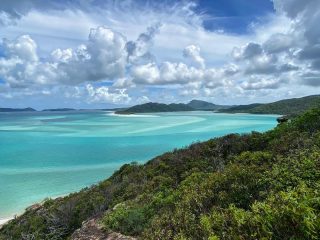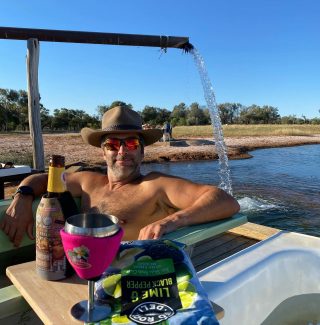We headed west from Sydney on a 903 kilometre journey to Mungo National Park to visit the “Walls of China“, a magical moonscape in Outback New South.
Mungo National Park has maintained a continued record of human occupation stretching back well over 45,000 years by the Aborigines, making it the site of the oldest known human occupation in Australia. Three traditional tribal groups now care for Mungo, the Mutthi Mutthi, Ngiyampaa and Paakantji.
The remains of various extinct creatures including: giant short faced kangaroos and a strange oxen-sized animal called a zygomayurus, have been found. Rain and wind has also uncovered a treasure of ancient artefacts and stone tools as well as fireplaces and hearths.
We took the 70 kilometre self-drive tour known as the Mungo track. The vegetation is sparse and desolate with wild melons spawling over the white sandy ridges. A mob of kangaroos peacefully lazed in the bush whilst wedge-tailed eagles glided in the endless ocean of blue sky. The silence was broken by the chatter and shrieks of pink cockatoos and mulga parrots, whilst lizards baked on the burning sand. We looked at each other, without having to speak, we just smiled, we knew we were in a special place.
A boardwalk has been constructed to protect the incredibly fragile and sensitive environment, ensuring that the special quality of this unique place is protected for future generations. You can only access the “Walls of China” by Aboriginal Discovery Tours which is a fantastic way to learn about the culture and history of Mungo.
Erosion has sculpted the sand and clay into somewhat dramatic formations that are the “Walls of China”. Rain and wind have washed away the soft sands and mud at the 30 kilometre long dune formation, also known as the Lunette, creating ridges of residuals that characterise the “Walls of China”. Dislodged sand is picked up by the wind and heaped into huge mobile dunes along the back of the dune formation. A visit to the walls allows a view across the ancient dry lake bed of Lake Mungo.
We were advised to stay and watch the landscape change in colour at sunset. This is an absolute must! During the daytime colours vary from a vibrant cream to sparkling yellow and khaki but as the sun begins to set the colour varies as each minute passes. As the sun descends, each grain of sand is illuminated by an aura of yellow, then gradually turns to a warm glowing orange and as the sun begins to fade a deep wine red magically spreads like a blanket over this wondrous land. We sat mesmerised by these special formations feeling humbled by the experience whilst a canopy of stars appeared in the sky above.
Lake Mungo is one of 17 dry lakes which constitute the World Heritage Site of Wallandra Lakes. The self drive tour takes you across the ancient bed of Lake Mungo. It also takes you to Mungo woodshed, Walls of China, Red Top Lookout, Belah campground, an old squatter’s hut, the remnants of Cobb and Co. coach tracks at Vigars Well, the viewing area at Lake Leaghur and the ruins of Zanci station.
We camped out under the stars and were very fortunate to experience a blood moon during a total moon eclipse, this was a very special moment, celebrated as always with a good bottle of red (picked up from McWilliams Family Winery) and a delicious juicy steak cooked by chef Rusty. You can also stay in the Shearer’s quarters or enjoy a bit of luxury at Mungo Lodge (a great place to find a coffee or beer or both in our case).
The park’s visitors centre is open every day and holds good cultural and archaeological information. The park should be visited in dry weather as the tracks are closed in wet weather, you must ensure you are self sufficient on this journey. The journey from Sydney is not for the faint hearted by any means but is most certainly a magnificent outback experience.
Safe travels my friends! X


